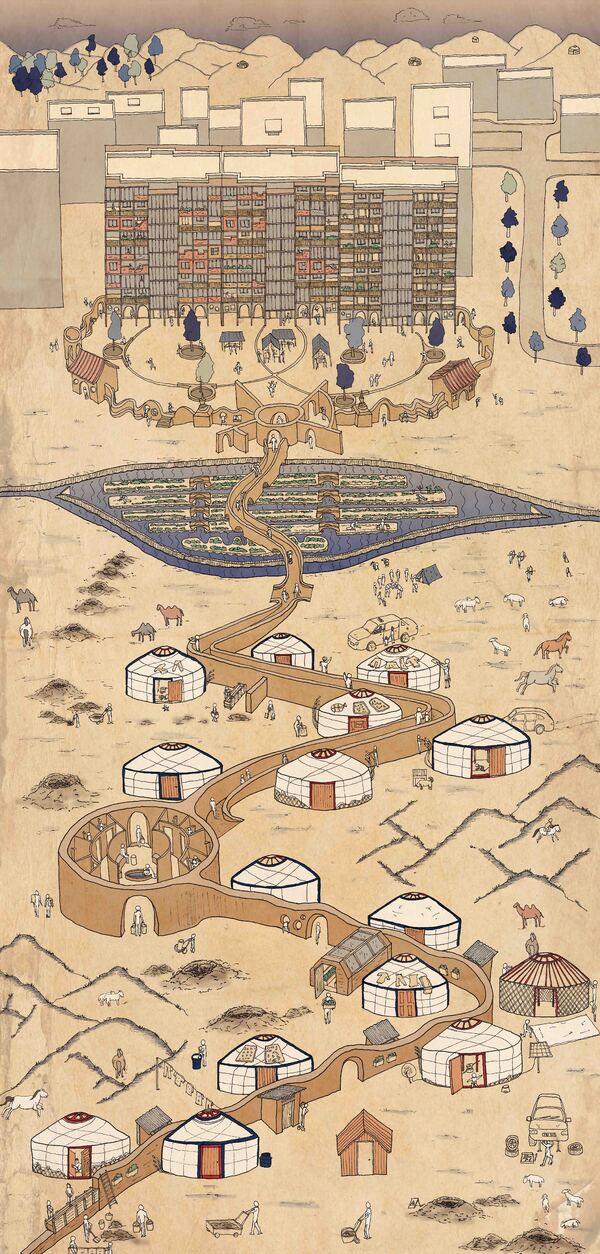A contemporary nomadic vernacular
The architecture of Mongolia is one that is intrinsically linked to the traditional yurt, or 'ger' as it is referred to. Half of the Mongolian population still live in these structures whilst sustaining a nomadic way of life, herding livestock and migrating for the best pastureland. However, this lifestyle is one that is becoming ever unsustainable due to issues relating to climate change and the development of the country. In the past few decades this has resulted in the mass migration of nomads into Ulaanbaatar, the capital city, where the problems of rapid urbanization are apparent.
Through this thesis I have researched in depth into what constitutes towards a Mongolian identity and vernacular, with personal ethnographic studies of family members as well as other Mongolians living in various contexts. These drawings illustrate my proposals which are based on improving and enhancing the current living conditions. The main proposal consists of a curving rammed earth wall to which ger's can be 'connected' to it within a parasitic sense - still maintaining their freedom to move on if need be. Rammed earth was chosen due to its sustainability in sourcing and producing within the vast Mongolian context, as well as acting as a catalyst in skill production for those who have been deskilled since leaving the herding lifestyle. The crammed socialist apartments have also been retrofitted with a glulam extension to provide for more habitable space, as well as an agricultural field which taps into the existing flood channel based off the traditional Incan 'Waru-Waru' method.
The main drivers for this thesis have been in combining Mongolian materials, skills and vernacular to create bottom-up, sustainable solutions for Mongolians living in varying contexts.


